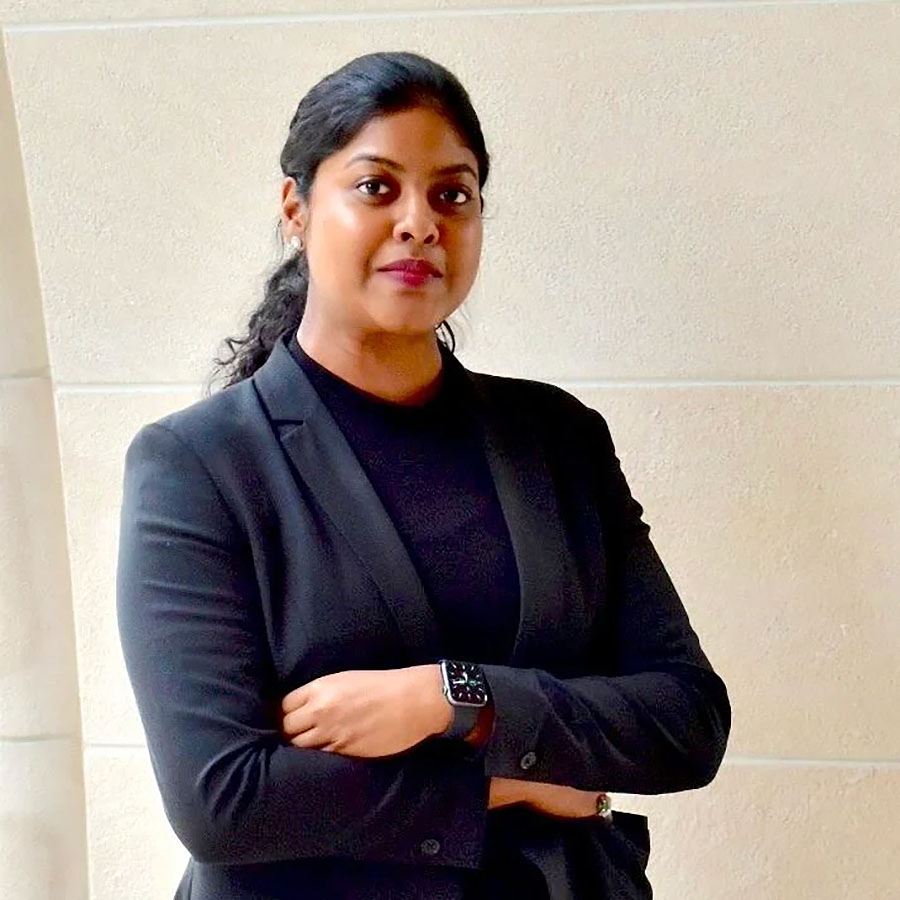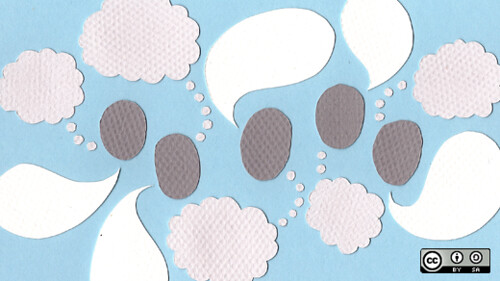by Stephanie Kelemen ’22

Plea bargains are like medications with bad side effects—extraordinarily painful to take, but they get the job done. In some cases, the pain outweighs the benefit of the treatment. But in the vast majority of cases—97 percent to be precise—criminal defendants take their medicine. And it hurts every single time.
I should know—I took a plea when I was 16 years old, I have represented criminal defendants in plea negotiations, and I have conducted research into the process of plea bargaining.
It happened to me almost exactly 10 years ago.
I’m standing up at the podium, slightly behind by lawyer. My focus is on balancing in my heels—they are a size too big, but I got them on clearance. The Judge asks the question I knew was coming: “Are you guilty of this charge?”
We had been working on negotiating this plea for the past six months. Every day that the case dragged on, I felt disconnected from the world, as if I was being suffocated from inside my own body. Today, the prosecutor finally agreed to what I wanted in the hallway outside the courtroom. It cost me my dignity—I cried to the prosecutor and begged him to acquiesce—but at least this whole thing would be over.
I nod my head, making eye contact with the Judge. “You must say your answer out loud.”
I don’t want to say it, but I feel like I have no real choice. Once the police charged me with a crime, I had two options: take a plea deal or go to trial. As much as I would relish the opportunity to prove my innocence at trial, that is not a real option. Even though the Constitution says that everyone has a right to an attorney, in Colorado, juveniles only get a public defender if their parents/guardians have less than $1,500 in liquid assets. I had to pay for every moment of my lawyer’s time. And how much did she think it would cost to go to trial? At least $10,000.
“Yes,” I finally respond to the Judge’s question. “But I have something I would like to say.” I lift up a statement I prepared and start reading. I tell the Judge about my shattered ideals. I tell her about how I learned there is no such thing as the presumption of innocence in this country—that once you are charged with a crime, you are guilty until proven innocent. I tell her that at the age of only 16, I have lost faith in our legal system.
The judge responds: “if that is how you feel, then why are you taking this plea?”
That question has bothered me for the last decade. How could a judge, someone who is intimately familiar with the law and observes the administration of justice every day, not understand why I would take a plea I was so unhappy with? The best answer I could come up with was that this judge had her head in the sand—she wanted to believe that justice was being done in her courtroom. It wasn’t until I started representing criminal defendants as a student in Harvard Law School’s Criminal Justice Institute clinic (CJI) that I began to wonder if there was more to her question.
When I first began at CJI, I inherited several clients whose cases had been pending for years. Some of these cases had legal issues that needed to be addressed prior to resolution. But for others, all that stood in the way of a resolution was an agreement with the prosecutor. I wondered why so many cases take so long to resolve when an agreement could be reached within a single conversation. After all, a national study of public defenders found that they spend on average a total of 20 minutes per misdemeanor case negotiating a plea.
My supervisor offered one explanation: “an older case is a better case.” Basically, the idea is that prosecutors are more willing to give lenient deals in cases that have been pending for a long time. As much as I trusted my supervisor’s expertise of criminal defense litigation, I was not ready to subject my clients to long waiting periods without putting up a fight. I had just completed Harvard Law School’s renowned Negotiation Workshop the previous year, so I believed that the solution was to take a more principled approach to plea negotiations. Telling me that the principles of negotiation do not apply to the criminal defense context was like telling me that the laws of physics do not apply to space travel.
But after many unsuccessful attempts to negotiate better deals for my clients, I started to wonder if there is something that makes negotiations in the criminal context special. After completing the Negotiations Workshop, I had negotiated everything from commercial contracts to divorce settlements. Not even disgruntled ex-spouses had presented as much resistance as I was getting from prosecutors.
Perplexed, I went to see Deanna Parrish, my former negotiations course professor and a clinical instructor for Harvard Law School’s Dispute Systems Design Clinic. I’m sitting in her office in search of answers on a sunny winter morning. Her dog, Guava, settles into a nap in the corner.
Deanna gets out a white board marker and draws a circle on the board. “Here you are trying to negotiate.” Then she draws a large circle around the first circle. “And here is the system that you are negotiating within.” She explains that negotiations skills and tactics focus only on the first circle, but they are powerless to change the larger circle.
Plea bargaining in the criminal justice system is a widely studied topic. Since only about 2–3 percent of criminal cases proceed to trial, plea bargaining has never been more important to the administration of justice. Many academic papers that identify issues with plea bargaining conclude that the solution lies with giving attorneys more robust negotiation training. But according to Deanna, this may not be enough.
“System-level interventions may be necessary when you have exhausted your negotiation skills,” Deanna explained. This is exactly the type of work Harvard’s Dispute Systems Design Clinic does across industries—the issue of a system stifling efficient negotiations is not unique to the criminal justice context. But how exactly does the criminal justice system impact individual plea negotiations? And what interventions could a court system put in place to foster faster and more just resolutions?
To answer these questions, I needed to talk to the people participating in plea negotiations. I wanted to explore the process, rather than the outcome, of plea bargaining to understand what was making these negotiations so difficult. I decided to home in on Massachusetts Municipal and District Courts, which only hear criminal cases with a maximum penalty of two-and-a-half years. I spoke with five practitioners, two prosecutors and two defense attorneys, with extensive experience negotiating pleas in these courts.
“You’re playing with poo,” a career defense attorney told me when I explained I am researching how Massachusetts Municipal and District Courts could make plea bargaining more efficient. “It’s like you are saying you want to make a cake, but the only ingredient sitting on the counter is poo. No matter how carefully you make the cake, it’s still going to taste like…”
He has a point. Mass incarceration, racialized policing, and the criminalization of poverty and mental health issues are some of the major flaws with our current criminal justice system. Reforms targeted at increasing the efficiency of the plea-bargaining process reinforce a system that many believe we should be deconstructing. Is there a way to fix the system without reinforcing its problematic elements?
I don’t know the answer to that question, but my interview findings revealed that those problematic elements are deeply intertwined with the process of plea negotiations. It turns out that plea bargaining in Massachusetts Municipal and District Courts is inefficient due to difficulties in reaching an agreement that both sides perceive as fair.
Generally, the prosecution makes an offer that the defense is not ready to accept. The defense then attempts to negotiate a better deal, usually through multiple, brief points of contact. If those efforts are fruitless, the defendant eventually comes to terms with the situation and accepts an offer they view as unfair. If the defense is able to get a better offer, the defendant similarly accepts when they feel the offer is unlikely to get better. This whole process can take many months and end with a result that is not hugely different from what the prosecution initially offered.
Why does the process look like this? Why is the prosecution always in the position of “offering” a deal to the defendant? Why are defendants unable to make headway in negotiating for an offer they view as fair? My conversations with local defense attorneys and prosecutors, my experience representing criminal defendants, and my research into integrative negotiation theory revealed several system-level root causes of this status quo.
Problems
Problem 1: Imbalanced Incentives to Settle
Interview participants on the defense side noted several systemic features that resulted in a relatively unattractive BATNA for defendants, incentivizing them to take a plea. Beginning from the moment a defendant is arraigned, they are either released with conditions that they must abide by or be held in custody. The conditions can range from frequent drug/alcohol screens to requirements to stay away from a particular location. These requirements can be burdensome and stressful for defendants, incentivizing them to take a plea as quickly as possible. The impact of incarceration is even more obvious. If a defendant is incarcerated pending trial, perhaps due to an inability to afford bail, then they will be motivated to accept any plea that enables them to get out.
The so-called “trial penalty” is another element that makes the defense’s BATNA less attractive. The National Association of Criminal Defense Lawyers (NACDL) defines the trial penalty as “the substantial difference between the sentence offered in a plea offer prior to trial versus the sentence a defendant receives after trial.” According to NACDL, trial penalties in America are so severe and pervasive, that this single element is the reason why the vast majority of cases end in pleas, even if a defendant is innocent or the plea is otherwise unjust. Some progressive prosecutors, such as former Suffolk County District Attorney Rachael Rollins, have started eliminating trial penalties as a matter of policy.
Other prosecutors view the trial penalty differently. According to one Boston-area prosecutor I spoke with, the trial penalty is what makes plea bargaining fair: “the underlying theory behind plea bargaining is that in exchange for giving up constitutional rights, the defendant gets a better disposition.” The constitutional right he is referring to is the Sixth Amendment right to trial by jury, which encompasses the right to be presumed innocent until proven guilty beyond a reasonable doubt.
The problem is that the only leverage defense attorneys have is threatening to go to trial. But if the trial penalty is intimidating enough, then it guts the defense of any leverage. The defense attorneys I interviewed lamented that the problem was so bad that their clients would get scared and accept harsh plea bargains even when the attorney felt there might be a better offer down the road. Even when a defendant is willing to stick it out, there is no telling how a trial will turn out no matter the strength of the case.
The prosecution does not face the same systemic features that make the defense’s BATNA look worse. To the contrary, there are several considerations that make the prosecutor’s alternative of going to trial more favorable. Prosecutors don’t use the terms “win” or “lose” when describing the outcome of a trial. They say “guilty” or “not guilty.” This subtle use of terminology is representative of a broader culture in which prosecutors will not hesitate to try a weak case. “They have nothing at stake personally,” one prosecutor explained.
On the other hand, prosecutors, at least in the Boston area, feel an inordinate amount of personal responsibility in the pre-trial phase, especially in cases involving victims. They would prefer for a jury to acquit than for them to dismiss a weak case or offer a lenient plea bargain. In order to understand this seemingly irrational prioritization, you need to know about Jared Remy.
Jared Remy, the son of a Boston Red Sox player, was arrested in 2013 on charges of domestic violence against his girlfriend, Jennifer Martel. The prosecutor recommended that he be released on his own personal recognizance, meaning that he would not be held in custody pending trial. The next day, Jared Remy stabbed Jennifer Martel to death.
Almost a decade later, this story still haunts local prosecutors. Headlines such as, “for Jared Remy, leniency was the rule until one lethal night,” are a prosecutor’s worst nightmare. While the worst outcome for a defense attorney is losing at trial, the worst outcome for a prosecutor is a tragedy resulting from their leniency.
On balance, the defense is highly incentivized to settle a case while the prosecution is more ambivalent. Some defense attorneys expressed frustration at the fact that their clients take plea bargains out of fear even when the attorney believes it is a bad deal. But assuming the prosecution will make a strong case, the reality is that the defendant is highly incentivized to take a deal. Since the prosecution does not have the same level of incentive, they behave rationally by being less willing to compromise.
In addition to being less willing to compromise, the imbalanced incentives to settle between the prosecution and defense drive rushed negotiations, with the prosecution unwilling to dedicate space for more deliberate conversations. Because the prosecution is less invested in the case settling, they are generally less willing to spend time and resources on reaching a negotiated agreement. The dynamic then becomes defense attorneys chasing down prosecutors to discuss the case, often in whispered conversations in busy courtrooms.
Problem 2: Agency Dynamics
Interview participants described plea negotiation conversations as taking place without the presence of key stakeholders. On both the side of the defense and the prosecution, the party with the decision-making power is often not involved in discussions, instead participating through an agent. Agency problems in plea bargaining result in lost information and defendant dissatisfaction.
The most junior prosecutors, referred to as line prosecutors, are the ones who go to court and deal with defense attorneys. They are the ones engaging in plea negotiations, but they are often not the ones making decisions. Depending on the case and the prosecutor’s level of experience, they may need to get permission from a supervisor or carry out a supervisor’s orders when negotiating a plea. This means that the person who has the ability to sign off on an agreement is usually not involved in negotiations.
Sometimes this dynamic means that defense counsel works with the line prosecutor to prepare the line prosecutor to pitch a deal to their supervisor. However, defense attorneys complained that more often the experience is like that of negotiating with a blank wall—the line prosecutor will say “no” to the defense attorney’s request without explanation.
The defendant is also conspicuously absent from plea negotiations. When asked if they have ever tried engaging in plea negotiations with a client present, the answer from defense attorneys is a resounding “no.” The standard line seems to be that having a client present may hurt the client more than it helps—it is too big of a risk. “Clients react emotionally and verbally,” one defense attorney explained.
When the defendant is not present at negotiations and their story is represented in court from the perspective of the police report, they may feel that they never had the opportunity to be heard. This sentiment will taint their perception of the fairness of the process, causing them to view the plea as unfair.
Problem 3: Lack of Option Generation
The prosecution’s focus on retribution and use of take-it-or-leave it offers inhibit generation of options for mutual gain, fostering a culture of positional bargaining. The default is for prosecutors to focus on retribution when seeking justice on behalf of the Commonwealth. Some jurisdictions with “progressive prosecutors” at the helm, such as Suffolk County, have started shifting toward a focus on rehabilitation. However, this is the exception, rather than the rule. The prosecution’s focus on retribution means they are unwilling to consider options proposed by the defense that include rehabilitative measures, thereby reducing the universe of possible resolutions.
Interview participants on both sides further lamented that prosecutors have a pervasive culture of presenting take-it-or-leave-it offers. This presents a challenge to defense attorneys because it reduces the world of possible resolutions to a single option, and that option may impact different defendants differently. Since prosecutors do not have the capacity to be up to speed on the details on each case, they rely on tradition and norms to make decisions. They usually have standard pleas that they give for different charges, and they are resistant to deviate. “It is what it is” is the catch-phrase used to describe the phenomenon in which the status quo rules.
Problem 4: One-Sided Criteria
The lack of information on plea outcomes forces parties to negotiate against the backdrop of the trial, utilizing the criteria of the sentence in the event of a guilty verdict. Under this criterion, there is no room for the defendant’s characteristics. Instead, a plea offer is discussed in terms of the relative difference to the penalty a defendant would receive with a “guilty” verdict at trial. The prosecution refers to the defendant as if they are already guilty, and the defense attempts to point out holes in the prosecution’s case.
The problem is that the trial criterion heavily favors the prosecution due to the presence of several system-level features. Over charging is one such feature. This occurs when the defendant is charged with a harsher crime or a higher number of crimes than the prosecution wants to pursue. One defense attorney I interviewed had a client who was accused of stealing a purse, and they were charged with one count for each individual item inside the purse.
Mandatory minimums are another feature that tips the scales in favor of the prosecution. A mandatory minimum is a minimum sentence length imposed by the legislature and incorporated into the penal code. Defense attorneys cited mandatory minimums as the most egregious systemic feature driving unjust plea bargaining. Prosecutors wield mandatory minimums by offering to amend the charge to a lesser included offense without a mandatory minimum. In the criterion of the trial, this offer appears to provide a significant benefit to the defendant by allowing them to escape the certainty of that sentence if they are found guilty at trial.
Solutions
The findings detailed above reveal that plea bargaining in Massachusetts Municipal and District Courts is inefficient due to difficulties in reaching an agreement that both sides perceive as fair. Some of the problems detailed above can only be remedied through dramatic reforms, such as amending the penal code. However, smaller interventions at the court-level may still be effective in facilitating more efficient bargaining by promoting integrative negotiation tactics.
Solution 1: Revised Green Sheet
Courts can implement a revised Green Sheet mandating that the prosecution justify their plea offer and inviting the defense to share attributes of the defendant and ideas of alternatives. Currently, these courts utilize a worksheet commonly referred to as a “Green Sheet” to facilitate plea tendering. The Green Sheet has three columns: one for the defense’s recommendation, one for the prosecution’s recommendation, and one for the judge’s disposition. Each party writes the proposed sentences, including fees probation conditions, but there is no place on the form for any supporting information.
A sheet that requires the prosecution to submit information justifying its offer could remedy several of the systemic issues with plea bargaining. In cases when line prosecutors are not aware of their supervisor’s reason for making a given recommendation, they may be motivated to ask additional questions on their supervisor’s considerations. Memorializing this information as part of the Green Sheet could also help combat prosecutor implicit bias by requiring prosecutors to articulate supporting information, rather than relying on gut impulses or historic policies for disposing of cases.
The section of the sheet soliciting information from the defense may also increase negotiation efficiency by increasing the defendant’s opportunity for input, thereby remedying the imbalance frequently observed during the negotiation process. The defendant may choose to take the opportunity to share information about themselves that does not otherwise have a place in plea negotiations. Providing this information may also allow the judge to consider mitigating information that may not otherwise be presented to the court in a case being resolved via plea.
The revised Green Sheet could also include a section for the defendant to propose alternative options, creating the opportunity for the defense to increase the pool of options to include resolutions that work better for the defendant or are more rehabilitative in nature. A judge who rejects a plea could then verbalize their preference for any of those alternatives to the prosecution, forcing the prosecution to consider additional options in continuing negotiations.
Solution 2: Data Collection and Publication
Courts can collect and publicly record information on plea offers, plea outcomes, and trial outcomes. All plea offers should be documented in a defendant’s docket, much like conditions of release. Creating this record will bind the prosecution in the event of rotating line prosecutors and deter prosecutors from revoking the offer down the line and extending a harsher offer. Additionally, since the judge will see the record of offers, they may be able to intervene earlier in the negotiation process. If this information is also collected and published in the aggregate, it will bring transparency to the degree of the trial penalty and provide information on more efficient starting offers.
Courts can also combat the imbalance in incentives to settle by collecting and publishing data on prosecution trial losses. A high percentage of “not guilty” verdicts in a particular office may be an indication that the office is either ineffective or inefficient. If the percentage is high enough, the public may exert pressure on the prosecutor’s office in the same way as when a bad outcome results from a plea. The public may be concerned that the office is allowing criminals to walk free or that the office is wasting taxpayer dollars by taking weak cases to trial. If prosecutors are more invested in plea negotiations, they will dedicate more resources to settling and be more willing to compromise.
***
“How does the defendant plea?” The judge poses the question to me as I stand beside my client. He is in custody, so there is a wall of plastic separating us, with only a small hole to communicate through. This is an improvement to the conditions we were in just a few minutes earlier. When my client was brought in from the jail, they sent him to “lock-up,” a windowless corridor of cells hidden in the back of the top floor of the courthouse. I visited him there to explain the plea deal the prosecutor just offered.
With no privacy from guards or other inmates, I yelled the details and repercussions, ducking down so that my mouth was at the level of the slit designed to pass papers. He did not know he would be taking a plea when he came in today, and he only had a few minutes to think about it before they sent him down to the fishbowl cell in the courtroom.
“Guilty,” I respond. Then my client has to do what I did ten years ago. I can see the pain in his face, and I want to tell him I understand. But I don’t—not really. I was not standing in a cell when I was in his shoes. I was not charged with things that should not even be crimes. Things that were criminalized to target people like him.
But this is the best possible outcome given the circumstances. My client was resolving charges from 21 open cases, one of which was brought that day. I got the prosecutor to dismiss 18 of those cases outright in exchange for my client pleading to three cases. This is a win—better than trial. Though to my client, it is the day he becomes a convicted felon, a mark that will likely follow him for the rest of his life.
I think back to the question the judge asked me a decade ago: “if that is how you feel, then why are you taking this plea?” I did not have an answer for her then, but I have one now. The criminal justice system is built on plea bargaining. But real plea bargaining takes place in the shadows—in hushed conversations in hallways and quick phone calls, without the participation of the person who is affected the most, without data or oversight. Prosecutors are constrained by norms dictated from above. And defense attorneys are powerless to fight back against the bricks stacked against them.
At a certain point, you have to surrender and move forward.
But it does not have to be that way. System-level interventions have the power to dial back the power of prosecutors and level the playing field. Changing some of the most problematic and deeply imbedded systemic features may require action at the legislative level. But local courts have the power to implement process remedies rooted in negotiation principles to foster more efficient and just plea deals.
Incremental solutions such as a more extensive Green Sheet and protocols surrounding plea offer and trial outcome data publication have the potential to correct some of the system failures inhibiting negotiations. These measures have the ability to bring the relevant stakeholders to the negotiating table, arm the parties with less biased criteria, and encourage more creative resolutions. The resulting increases in efficiency will reduce backlogs in courts, give victims resolution closer to the date they were harmed, enable defendants to begin rehabilitation sooner, and allow attorneys to devote more attention to cases appropriate for trial.
To defendants, a plea, no matter how favorable the terms, will always feel like taking your medication. But maybe it won’t hurt quite so much.









